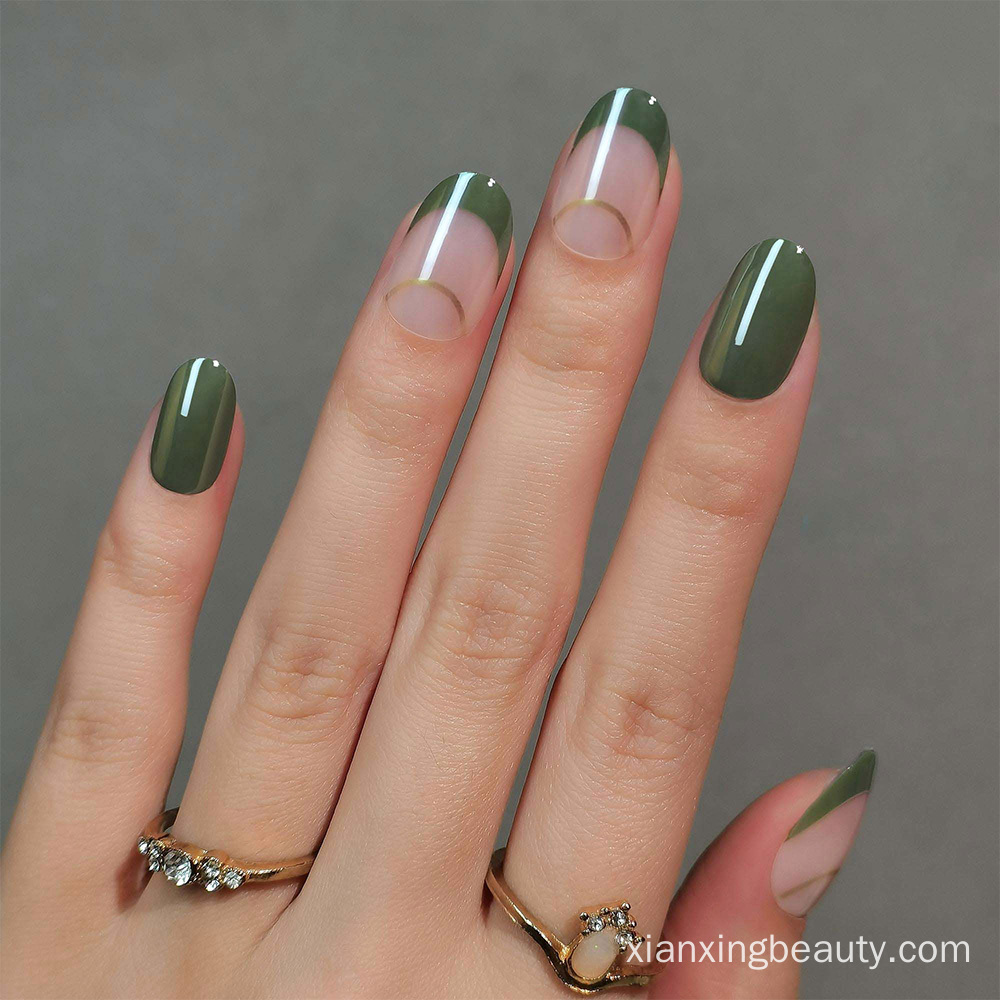Introduction
Fake nails have become a beauty staple for many, offering an easy way to achieve flawless, salon-quality nails at home. They are available in various materials such as acrylic, gel, and press-on, and can be customized to fit different styles, shapes, and lengths. However, just like natural nails, fake nails require proper care and maintenance to keep them looking their best.
One of the most common questions people ask about fake nails is, can you file fake nails? The short answer is yes, but the process requires some knowledge about the materials used for the nails, the tools you need, and the proper techniques to ensure that you don’t cause damage to your nails. In this comprehensive guide, we will delve into how to file fake nails, the best tools to use, and some essential dos and don'ts to make sure your nails stay beautiful and healthy.
Can You File Fake Nails?
Fake nails are designed to be versatile and durable, but that doesn't mean they don’t need occasional care and maintenance. Filing fake nails is a common practice for those who prefer a more customized look or need to smooth out rough edges. Whether you’re dealing with
acrylic nails, gel nails, or press-on nails, knowing how to file them properly can make a huge difference in both the appearance and longevity of your nails.
Acrylic Nails
Acrylic nails are one of the most popular options for fake nails, known for their strength and long-lasting wear. They are made by mixing a liquid monomer and a powder polymer to create a sturdy layer over the natural nail. While acrylic nails are durable, they can be easily shaped and filed to suit your style.
When filing acrylic nails, it's important to use the right type of
nail file to avoid damage. A coarse file (100-150 grit) is ideal for the initial shaping, while a finer file (180 grit or higher) is perfect for smoothing out edges and achieving a polished finish.
How to File Acrylic Nails
Use a Coarse File: Start by using a coarse file to trim your nails down to your desired length. Hold the file at a 45-degree angle to the nail to avoid filing too deep.
Shape the Nail: If you want to change the shape of your acrylic nails, do so gradually. Start by filing the sides of the nails to create the desired contour. You can go for square, oval, almond, or stiletto shapes depending on your preference.
Smooth the Edges: Once the shape is in place, use a finer file to smooth out any rough edges. This will ensure that the edges are smooth and polished, preventing snagging.
Buff the Surface: To give your acrylic nails a shiny finish, use a nail buffer to gently buff the surface. This also helps smooth out any imperfections.
Gel Nails
Gel nails have gained popularity for their flexible and natural-looking finish. They are made from a gel-like substance that is applied to the nails and then cured under UV or LED light to harden. Gel nails are more flexible than acrylics, but they can still be filed, although with a gentler approach.
Because gel nails are softer than acrylic nails, they require a different filing technique. You’ll need a medium-grit file (180 grit) to shape and smooth them without weakening the structure of the nail. Unlike acrylic nails, gel nails are less likely to crack, but excessive filing can cause them to peel or lift from the natural nail.
How to File Gel Nails
Start with a Medium File: Use a 180-grit file to shape your gel nails. Be gentle, as gel nails are more delicate than acrylics.
File in One Direction: Always file in one direction to avoid causing damage to the nail and to prevent the gel from lifting.
Avoid Over-filing: Gel nails are more flexible, but if you file too aggressively, you risk damaging the structure of the nail. Be cautious and file slowly, checking the nail frequently.
Buff the Nails: After filing, use a buffer to smooth out the surface and make the nails look polished. Be gentle with the buffer to avoid thinning the gel layer.
Press-On Nails
Press-on nails are pre-made nails that are glued onto the natural nails. These are typically thinner than acrylic or gel nails and are usually a one-time-use product. While they don’t require filing as much as acrylic or gel nails, you can still file them if you want to change the shape or adjust the length.
How to File Press-On Nails
Use a Fine File: Press-on nails are often thinner than acrylic or gel nails, so it’s best to use a fine grit file (220 grit) to avoid breaking the nails.
Trim First: Before filing, trim the press-on nails to your desired length. Make sure not to cut too close to the edges to avoid causing cracks.
File Gently: Because press-on nails are more fragile, file them gently, focusing on smoothing the edges and not altering the overall shape too much.
Best Tools for Filing Fake Nails
Using the right tools is essential for achieving a professional-looking finish when filing fake nails. The wrong tools can lead to uneven edges, damaged nails, or even injury. Here are the best tools to have in your nail care kit:
Nail Files
Nail files come in various grits and materials, and the grit you choose will depend on the type of fake nails you're filing. Here’s a breakdown of the best files for different nail types:
Coarse Files (100-150 grit): These are ideal for shaping acrylic nails. They help trim the nails to your desired length and create the initial shape.
Medium Files (180-220 grit): These files are great for gel nails and for smoothing acrylics after the initial filing. A medium file allows you to shape the nails without damaging them.
Fine Files (240+ grit): A fine file is used for buffing the nails and smoothing out the edges after the shaping process. These files are gentle and prevent over-filing, which could weaken the nails.
Buffer Blocks
A buffer block is a multi-sided tool used to smooth and shine the surface of fake nails. Buffer blocks are typically used after filing to give the nails a smooth and
glossy finish. When buffing, it's important to be gentle, as over-buffing can weaken the nail and cause it to lift.
Nail Clippers
Nail clippers are essential for trimming your fake nails before you begin filing. It's especially helpful for shortening long nails before filing them into the desired shape. For thick acrylic nails, it's better to use clippers instead of trying to file them down.
Dos and Don’ts of Filing Fake Nails
When filing fake nails, there are some essential tips and guidelines to keep in mind. Proper filing techniques can help you avoid damaging the nails and will keep them looking flawless for a longer period.
Dos:
Do File in One Direction: Always file in one direction to avoid putting unnecessary stress on the nail. Filing back and forth can cause the fake nails to weaken and break.
Do Be Gentle: Filing too aggressively can damage the nails and the natural nails beneath. Be patient and file slowly for the best results.
Do Use the Right File for the Job: Make sure to use the correct grit for the material of the fake nails you are filing. Coarse files work best for acrylics, while medium and fine files are better for gel and press-on nails.
Do Maintain Nail Length: If you’re shortening the nails, use clippers first before filing. This helps prevent the file from becoming too dull or damaged.
Do Buff the Surface: Buffing your nails after filing can help achieve a smooth and shiny finish. It also helps to remove any remaining roughness after filing.
Don’ts:
Don’t Over-file: Over-filing can weaken the nails and cause them to crack or break. Be sure to stop once you have achieved the desired shape.
Don’t File Wet Nails: Always file your nails when they are dry. Wet nails can become soft and bend or crack easily during filing.
Don’t Use Metal Files on Gel Nails: Metal files can be too harsh on gel nails, causing them to peel or lift from the natural nail. Stick to a medium or fine grit file for gel nails.
Don’t Rush: Filing fake nails requires patience and precision. Take your time to ensure that you get the shape you want without damaging the nails.
Conclusion
Filing fake nails is an important part of their upkeep, whether you’re working with acrylic, gel, or press-on nails. The right tools and techniques can help you maintain the perfect nail shape and finish without causing damage. By following the tips and tricks shared in this guide, you’ll be able to file your nails like a pro and keep them looking beautiful for longer.
If you’re looking for high-quality products to maintain your nails, consider checking out
Xianxing Beauty, a trusted brand in the beauty industry. Their products ensure durability and offer the best solutions for all your nail care needs. Take the first step towards perfect nails today!
FAQs
How often should I file my fake nails?
You don’t need to file your fake nails frequently, but it's recommended to file them if they start to chip or if the edges become uneven. Every 1-2 weeks is a good rule of thumb, but it also depends on your personal preference and how well your nails are holding up.
Can I file my nails too much?
Yes, over-filing can weaken the nails and cause them to break. Be gentle, and avoid filing too aggressively. Always stop once the nails are shaped to your liking.
Can I use a regular nail file for fake nails?
It's best to use a file specifically designed for fake nails. Regular nail files may not be coarse enough for acrylic or gel nails and can lead to damage.
What grit file should I use for acrylic nails?
For acrylic nails, a coarse file (100-150 grit) is best for shaping. Once the basic shape is achieved, switch to a finer file (180 grit or higher) to smooth the edges.
Can I file press-on nails?
Yes, you can file press-on nails, but use a fine grit file (220 grit) and file gently to avoid breaking them.












Facebook
YouTube
Instagram
LinkedIn